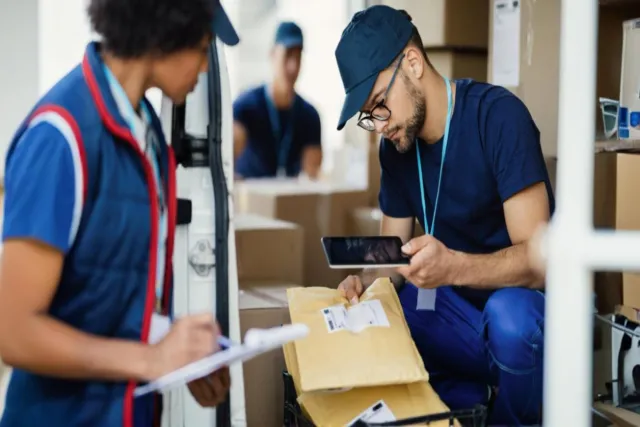
Let’s face it — no one enjoys waiting for a package with zero idea when it will arrive. Whether you’re ordering a small item from an online shop or sending an important document across the country, knowing where your parcel is at any moment is something we’ve all come to expect. In the world of fast deliveries, clear tracking has become more than just a nice extra — it’s something customers rely on.
Over the years, package tracking has gone from simple status updates to real-time location info, text alerts, and delivery windows. Among the companies leading that change is FedEx, one of the world’s most recognised names in logistics.
In this article, we’ll break down why package tracking matters, how customer expectations have shifted, and how services like FedEx tracking are adapting to meet those growing demands.
![]()
People Expect More Now — and That’s Not a Bad Thing
Not long ago, sending a package meant dropping it off and hoping it got there on time. You’d maybe get a rough estimate of the delivery date, and that was about it. If it was delayed? You usually didn’t know until someone called to ask where it was. Now, that kind of experience doesn’t cut it anymore.
People expect full visibility. They want to know when a label is created, when the item ships, where it’s scanned along the way, and when it arrives. They want notifications — not just for delivery, but for every step in between.
And why shouldn’t they? In a world where you can track your food delivery down to the street corner, it’s fair to want the same kind of updates for something you’ve paid to ship.
What Makes Good Tracking “Good”?
It’s easy to say “we offer tracking,” but not all tracking systems are equal. Some are vague or slow to update, while others offer real-time details, alerts, and more.
So, what makes a tracking system reliable and helpful for customers?
- Clear updates: People want plain language, not confusing status codes or jargon.
- Real-time info: If your parcel just left a facility or got delayed, you want to know right away.
- Accuracy: Giving a false delivery date or claiming that your item is "in transit" for days with no movement can be frustrating.
- Notifications: Getting updates via text or email helps people stay in the loop without having to constantly check a tracking page.
Their tracking tools let customers follow a package from the moment it’s shipped, with real-time updates at each step. Users can even request delivery alerts, get estimated delivery windows, and see if someone signed for the package — all from a single tracking page.
Why It’s About More Than Just Location
Good tracking isn’t only about knowing where your package is on a map. It’s about trust.
When people can follow their order’s progress, it builds confidence in the company that’s delivering it. They feel informed. They feel respected. And, they’re less likely to flood customer support with questions like “Where is my order?”
For businesses, this saves time and money — fewer emails, fewer angry customers, fewer refunds. It also means fewer misunderstandings. If a package is delayed because of weather, for example, tracking lets customers see that in real-time rather than being left in the dark.
Delivery Problems Still Happen — But Tracking Softens the Blow
Even the best carriers run into problems. Weather, customs delays, incorrect addresses — stuff goes wrong sometimes. That’s part of shipping. But when people have access to good tracking, those hiccups feel a lot less frustrating.
For example, if your package is delayed and you get a message explaining why and when to expect an update, you’re probably going to stay calm. Compare that to a customer who’s heard nothing and assumes their parcel is lost.
This is one of the key strengths of FedEx tracking: it’s built not just to inform, but to manage expectations. The system tells people when something goes off track, and in many cases, offers next steps or alternative delivery options.
![]()
The Bigger Picture: Logistics Is About Experience, Not Just Speed
There’s a lot of focus in the shipping industry on being “the fastest.” But speed without clarity can backfire.
Customers don’t just want quick deliveries — they want reliable ones. They want to feel like someone’s keeping them in the loop. And, companies that understand this are investing in tools that make shipping more transparent and less stressful.
This is especially important for businesses that ship products regularly. Offering great post-purchase experiences (like smooth tracking and delivery updates) helps build loyalty. People remember when things go right, especially after they click "buy."
Final Thoughts
Package tracking used to be a bonus. Now it’s the bare minimum. And as customers ask for more — faster updates, more accuracy, better communication — companies are having to rethink how they handle the delivery experience.
FedEx tracking is a good example of what this can look like when done right: real-time info, helpful notifications, and tools that take some of the stress out of shipping.
Because in the end, it’s not just about moving a box from Point A to Point B. It’s about keeping people informed, building trust, and making sure the delivery experience feels as smooth as the order itself.
Disclaimer: This post was provided by a guest contributor. Coherent Market Insights does not endorse any products or services mentioned unless explicitly stated.





